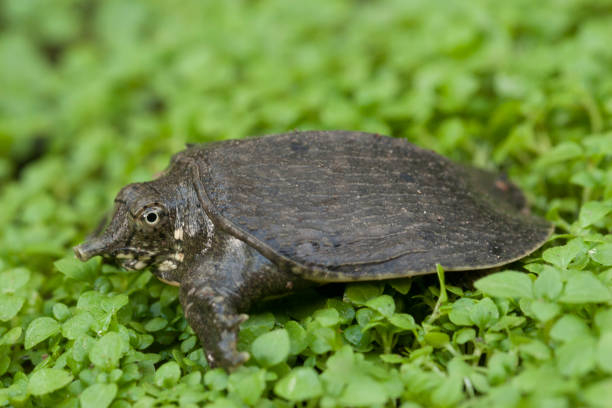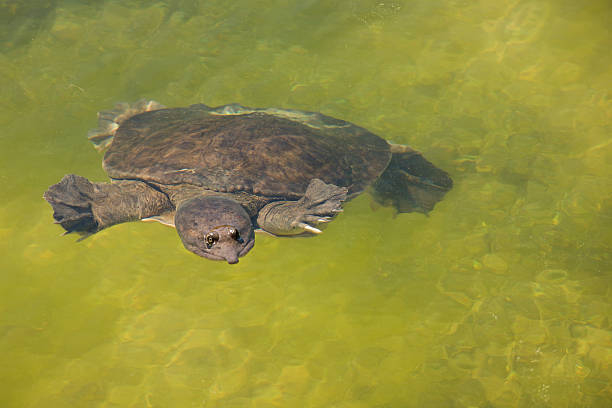Softshell turtle
The Nile River watershed is home to the softshell turtle, which is distinguished by its flattened shell. The softshell turtle's flattened shell is hydrodynamically efficient and helps to its ability to swim quickly. Some of the world's biggest freshwater turtles are softshells, yet many can adapt to life in brackish environments. Most species were once classified as Trionyx, but the great majority have now been reassigned to different genera. These include the North American Apalone softshells, which were housed in Trionyx until 1987.
Their carapaces lack horny scutes (scales), however the spiny softshell, Apalone spinifera, does contain some scale-like projections, thus its name. The carapace is leathery and malleable, especially at the edges. The carapace contains a layer of solid bone beneath it in the center, as in other turtles, but this is missing at the borders. Some species contain dermal bones in the plastron, but they are not connected to the shell bones. These turtles' light and flexible shells allow them to travel more freely in open water or muddy lake bottoms. Because they have a soft shell, they can travel more quicker on land than other turtles.













